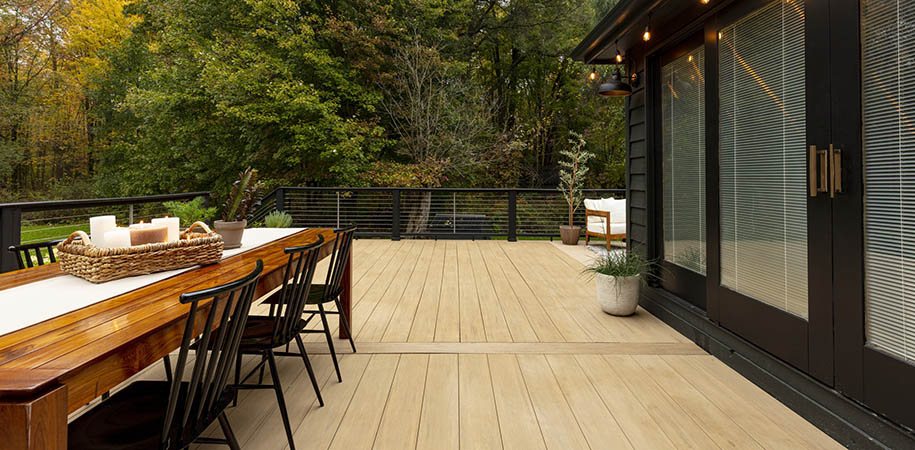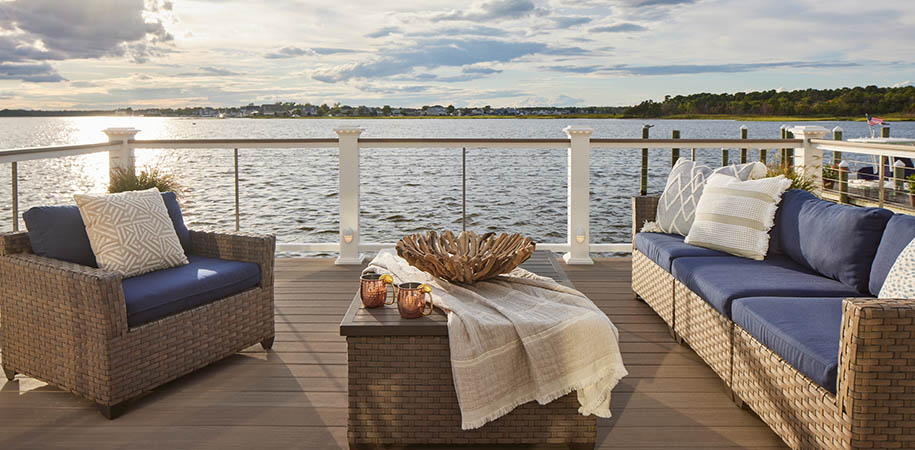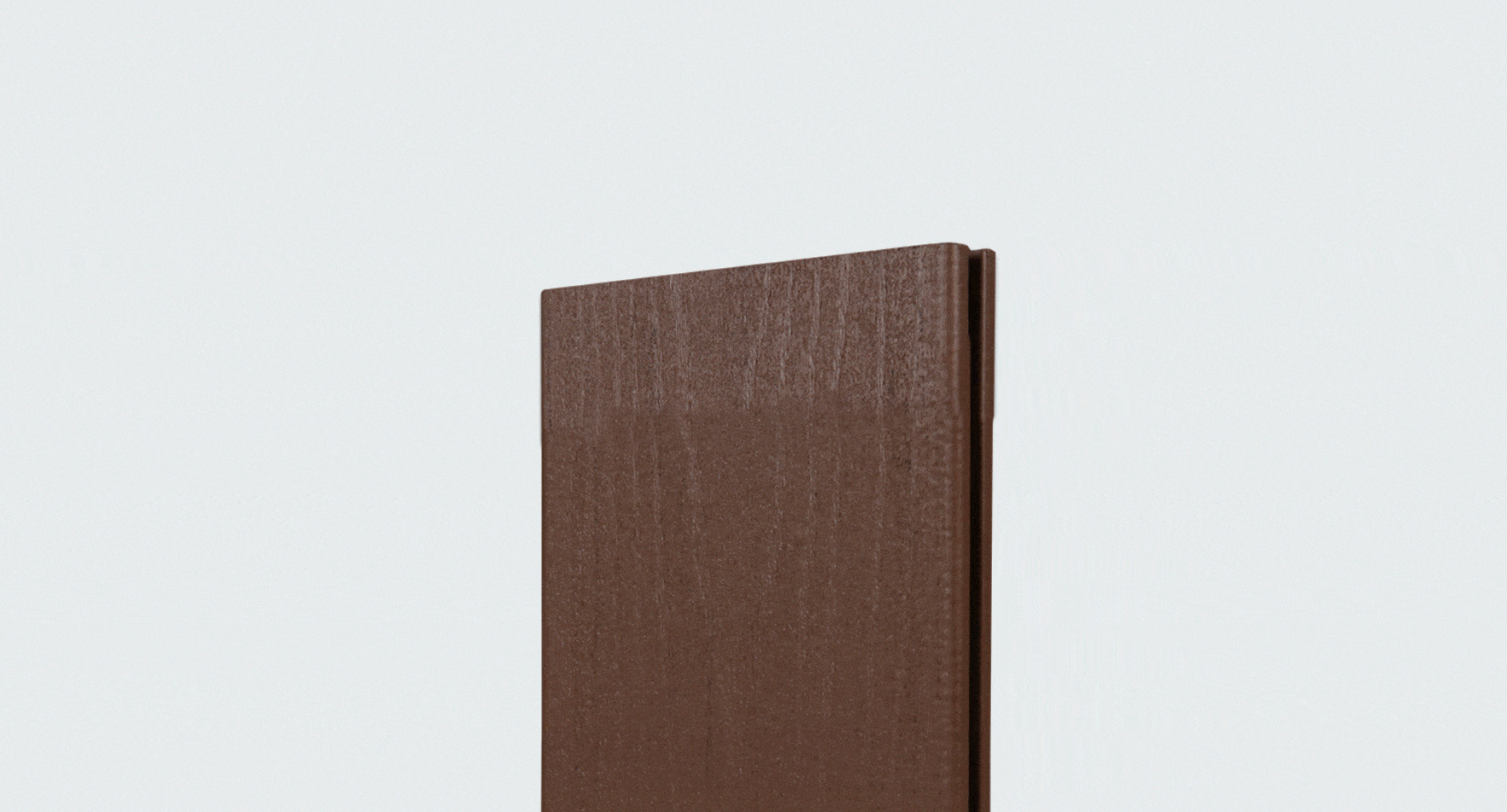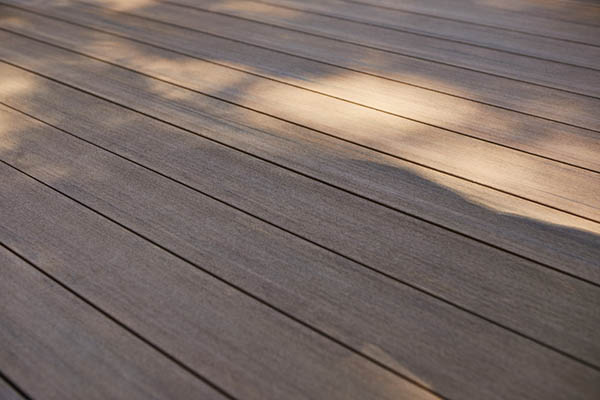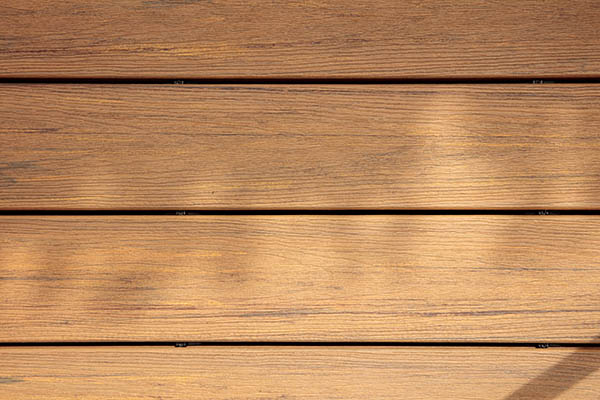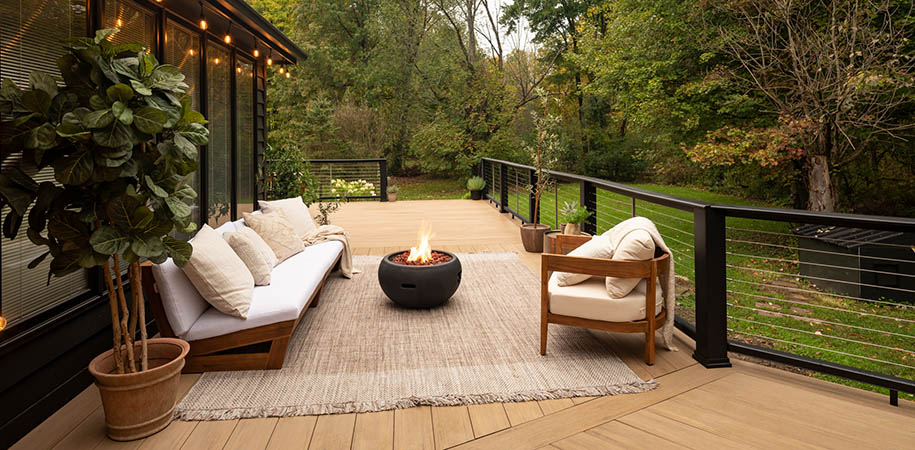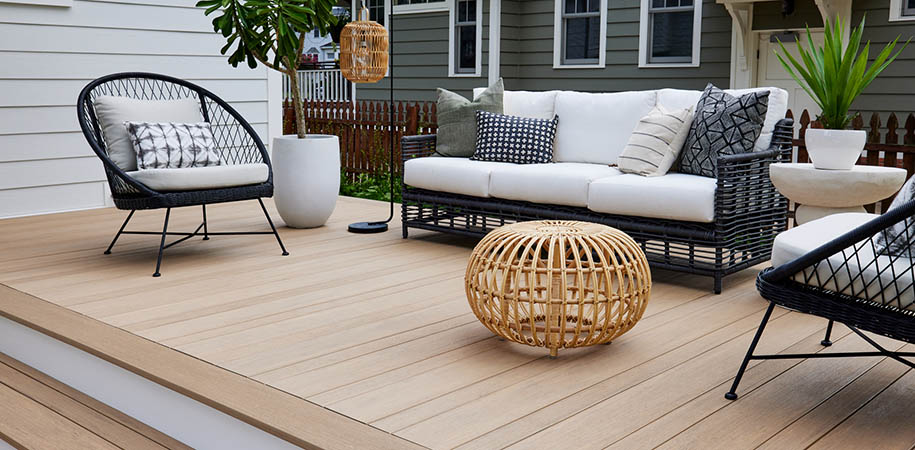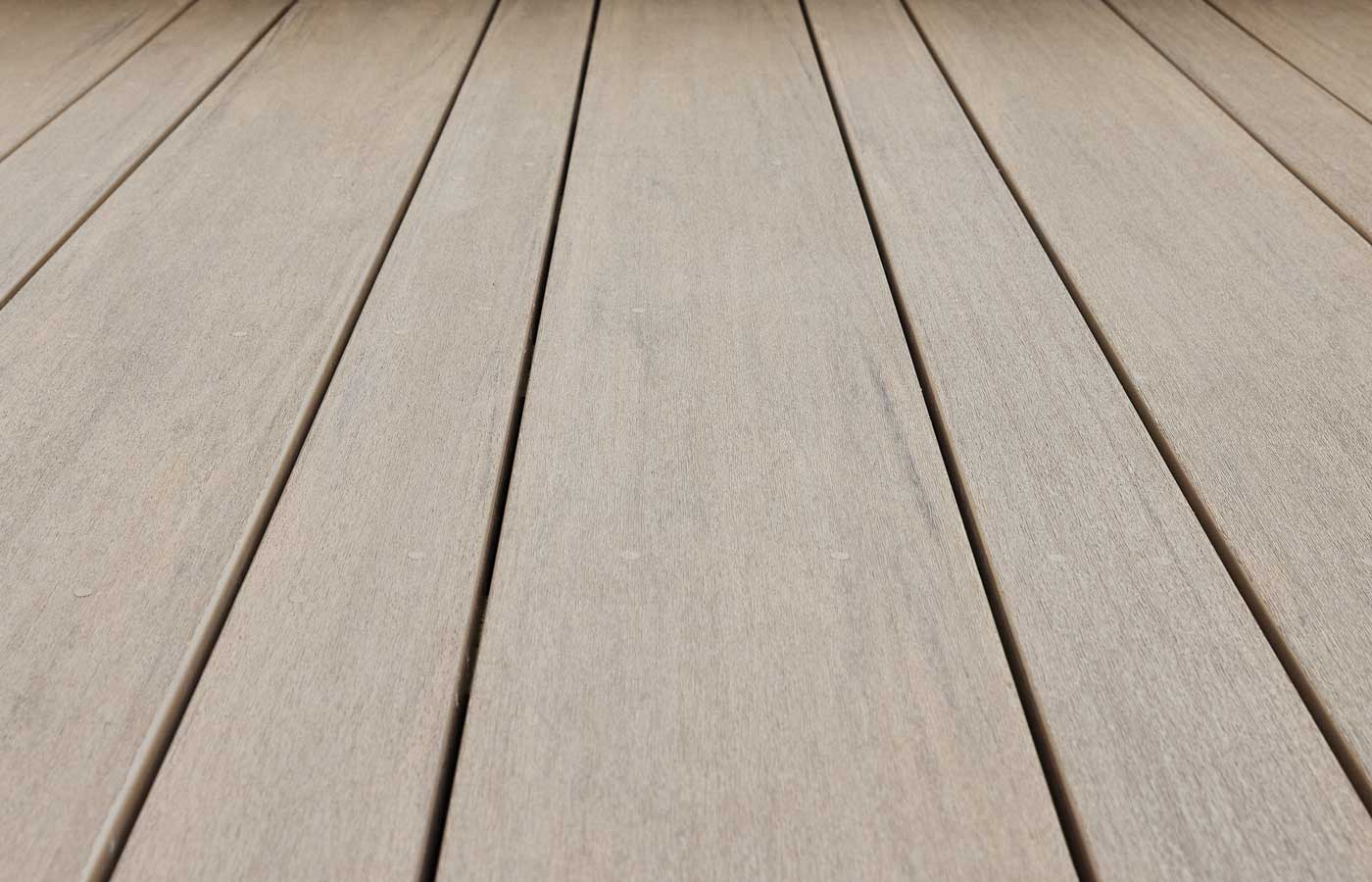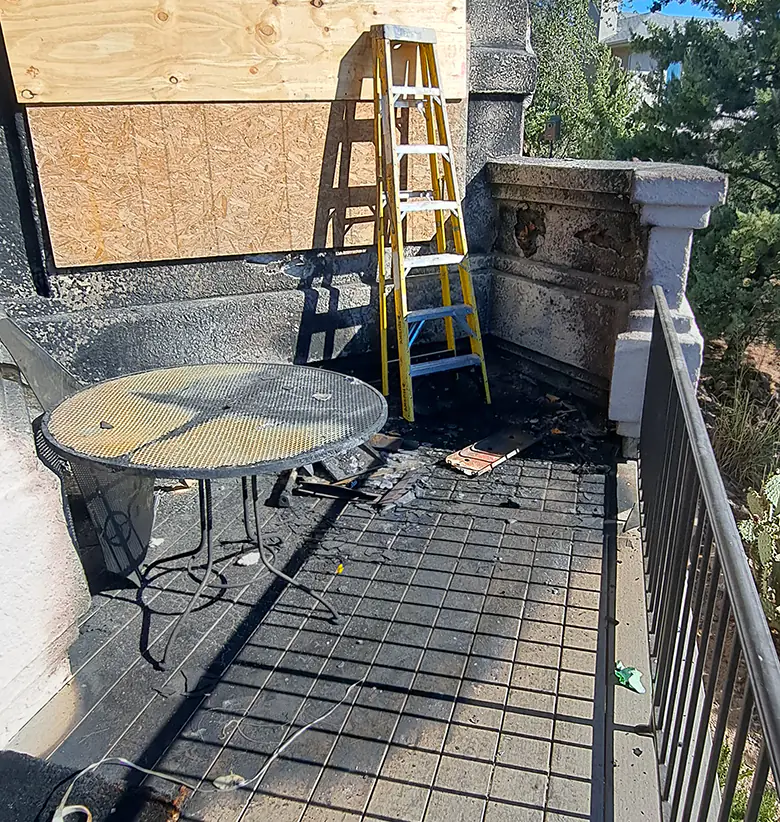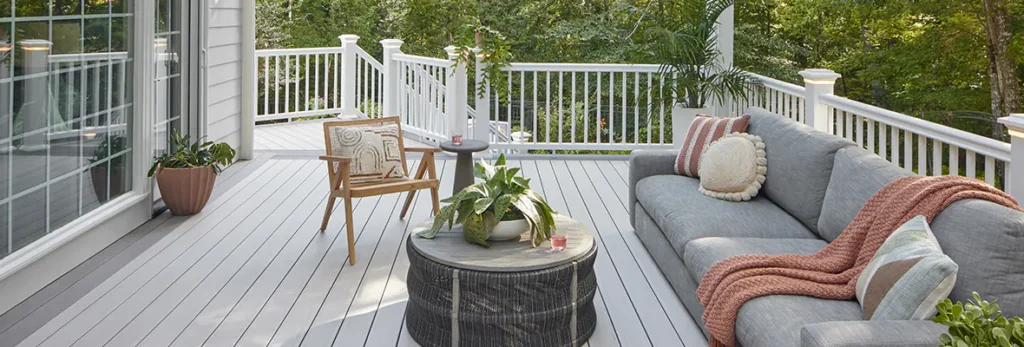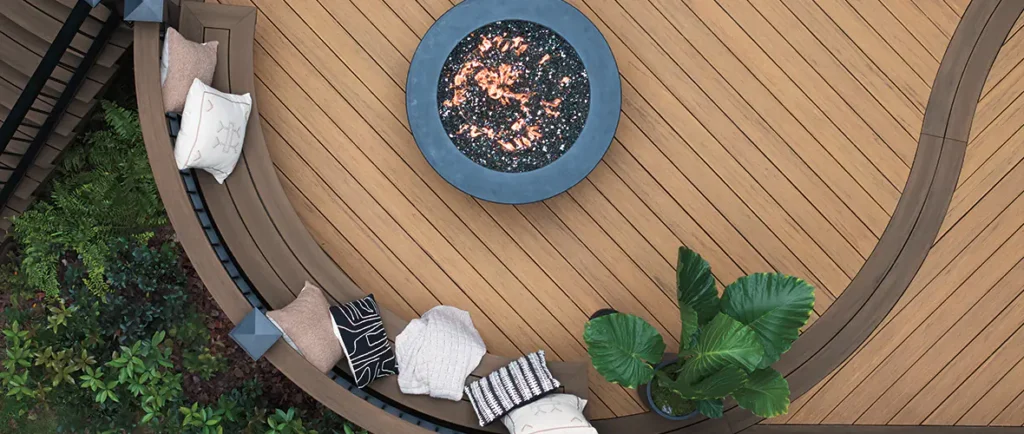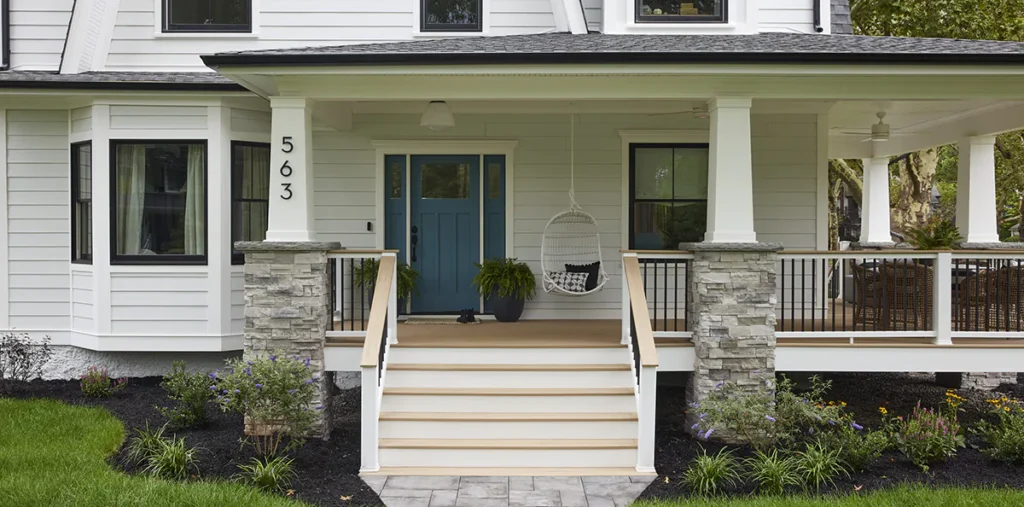You know that sustainability is incredibly important — perhaps now more than ever. And making sustainable choices — no matter how big or how small — can truly make a difference for our lives and the lives of future generations. When it comes to building an outdoor living space, you want a sustainable deck material that’s a better choice for not only your family, but the planet. But when it comes to your most sustainable decking material options? You may be surprised to know that wood doesn’t make the cut.
SUSTAINABILITY? IT’S IN OUR NATURE
Discover more about why sustainability is important and how you can make a difference.
EXPLORE OUR SUSTAINABILITY SERIES
Why Seek the Most Sustainable Decking Material?
Choosing a sustainable deck material isn’t just a great choice for the planet — it’s a great choice for you and your family, too.
Benefits of Choosing a Sustainable Deck Material
✓ Contributes to your home’s eligibility for LEED certification which, in turn, can improve the resale value of your home.
✓ No staining required, so no exposure to the potentially harmful chemicals often found in wood deck stains.
✓ Helps contribute to a healthier planet for your family and future generations.
✓ Less maintenance needs thanks to longer-lasting materials, which translates to less material making its way to landfills — and lower long-term costs, too.
Now that you know the benefits of choosing a sustainable deck material, it’s time to explore your options.
A Brief Look at Your Deck Material Options
Your deck material options include different types of traditional wood as well as engineered decking alternatives like TimberTech capped PVC and capped composite decking. Your options vary significantly in terms of performance, aesthetics, cost, and of course, which is the most sustainable decking material options.
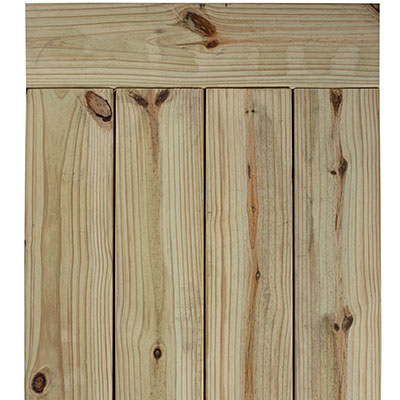
TRADITIONAL WOOD
Pressure-Treated Lumber
Typically a softwood like pine that’s been infused with potentially harmful chemicals to make the wood somewhat resistant to moisture and weathering.
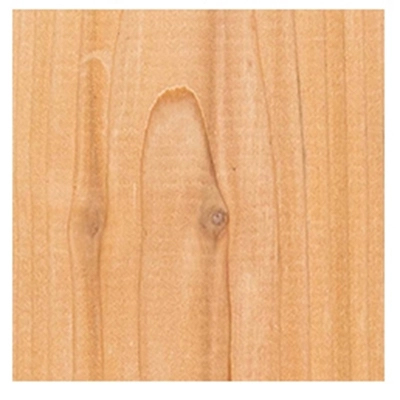
TRADITIONAL WOOD
Other Softwoods
Primarily cedar or redwood, which are only grown in certain climates. That means potentially greater fossil fuel consumption due to transportation.
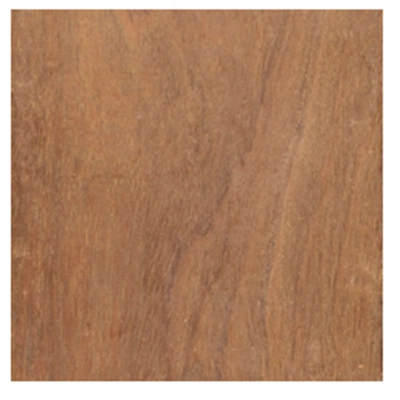
TRADITIONAL WOOD
Hardwoods
Typically includes mahogany, Ipe, or teak, which are often grown in exotic climates, making sourcing difficult, costly, and unsustainable — not to mention fossil fuel consumption from transportation, and the damage caused to some of the world’s most precious ecosystems.
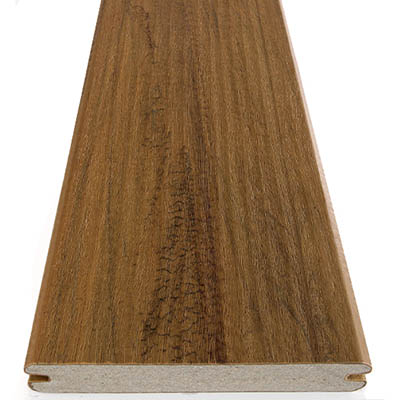
ENGINEERED DECKING
Capped Composite Decking
Made of a blend of recycled wood and recycled plastic fibers, protected with a fully engineered cap that locks color in and moisture out.
Plus, the wood fibers in TimberTech composite decking are 100% recycled, so no deforestation required.
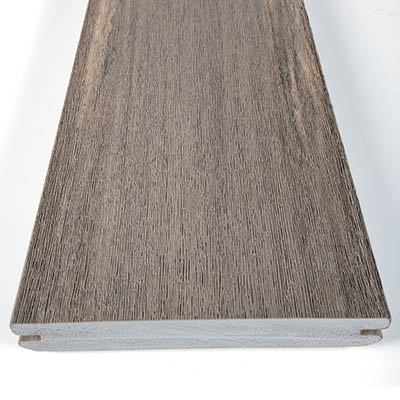
ENGINEERED DECKING
Capped PVC Decking
Made with 100% high-performance polymers, a majority of which are derived from hard-to-recycle plastics. Plus, as a fully engineered material, TimberTech capped PVC decking is fully recyclable at the end of its (decades-long) lifespan.
Organic Wood? A Natural Disaster
Before we go further, it’s worth pausing to acknowledge a common misconception. You might think that natural wood decking is inherently the most sustainable decking material — more so than manufactured alternatives.
The thinking goes: Given that wood comes from nature, sustainability must be primarily associated with natural wood. Right? Wrong.
That’s actually the very reason why organic options are not as sustainable as engineered decking. Cutting down trees for decks often contributes to deforestation, and using chemicals to maintain the performance or appearance of natural wood releases Volatile Organic Compounds (VOCs) into the air and even the ground beneath your home. All this makes wood far from your most sustainable decking material.
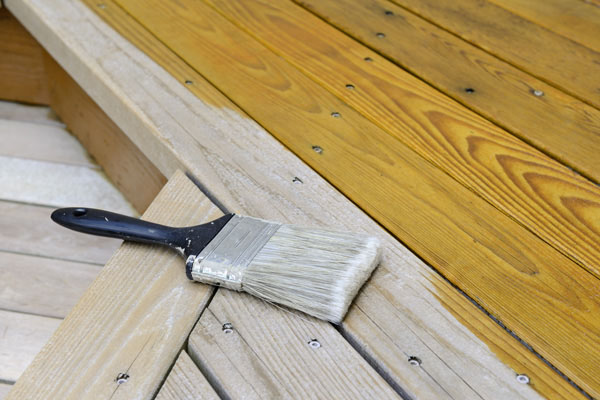
Wood Maintenance: An Unsustainable Chore
Left untreated, wood is highly vulnerable to the elements, especially moisture.
The only way to protect it? Regular (and costly) staining, oiling, and/or sealing for protection — which means lots of exposure to VOCs over the lifespan of your deck.
So What Makes Composite Decking a Sustainable Deck Material?
A sustainable deck material is one that:
✓ Uses majority recycled material.
✓ Doesn’t require harmful chemicals for maintenance.
✓ Is made with sustainable manufacturing processes
Promoting better health for your family and the planet.
Your sustainable choice? TimberTech capped PVC and capped composite decking.
At TimberTech, we believe you deserve a better life outdoors, which is why we strive to deliver the best of the best. That means the most beautiful outdoor living products built on a foundation of innovative tech and sustainability. Because you deserve products that not only look good, but do good.
Decking Made From Majority Recycled Material
At TimberTech, we turn plastic scrap and discarded wood fibers into beautiful recycled decking products. Whether you choose capped PVC or capped composite, you can be sure you’re choosing a sustainable alternative to traditional wood.
Choosing recycled decking material reduces the amount of virgin lumber being used in deck building. This in turn reduces deforestation and keeps millions of pounds of waste out of landfills each year. In short? Recycled decking material supports a more sustainable future.
WANT THE BEST OF THE BEST?
In terms of performance, aesthetics, value, and sustainability, TimberTech Advanced PVC wins. Learn more about the best decking material.
Minimal, Eco-Friendly Maintenance
Picture this: A year after your deck is installed, it’s still just as richly-hued as ever. No wood deck stain required.
With TimberTech, your deck ideal can be real. Our decking is designed with nature-inspired, saturated hues that endure, come rain or shine. And to maintain them? Forget spending several hours and hundreds of dollars sanding, staining, and sealing your deck. With TimberTech, maintenance is a simple matter of cleaning and rinsing.
Sustainable Manufacturing Processes
Using recycled materials that support eco-friendly maintenance wouldn’t mean much if the way those materials were made wasn’t sustainable, too. Luckily, TimberTech decking is made with sustainable processes that use our resources responsibly, so future generations can have the same quality of life we do.
How It Started
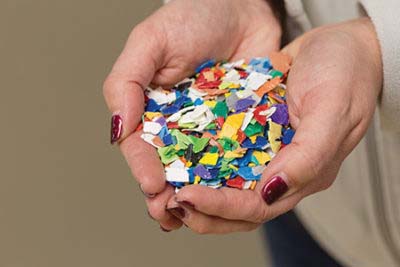
First, we source post-consumer and post-industrial plastics.
Next, we transfer our raw materials to our in-house, state-of-the-art recycling facilities.
Then, the magic happens.
Our team of expert engineers, researchers, and innovators transform these recycled materials into the highest-quality outdoor living products.
Because we refuse to settle for anything inferior.
AND IN THE FUTURE?
Our goal is to use 1 billion pounds of waste and scrap annually. Learn more about our long-term sustainability initiatives. READ THE REPORT
The takeaway? When you choose beautiful, innovative, and sustainable outdoor living solutions, you help improve your own life, that of your family, and the planet. Because building a more sustainable future is the best home improvement project of them all.
The Most Sustainable Decking Material? Not Wood
Now that you know the most sustainable decking material isn’t wood, you’re ready to explore some of your sustainable options. Order free samples of TimberTech decking in your favorite colors to see the natural-looking beauty and feel the difference. Be sure to place your samples outside to get a sense of what they look like in different lighting — and see how well they perform against the elements.

